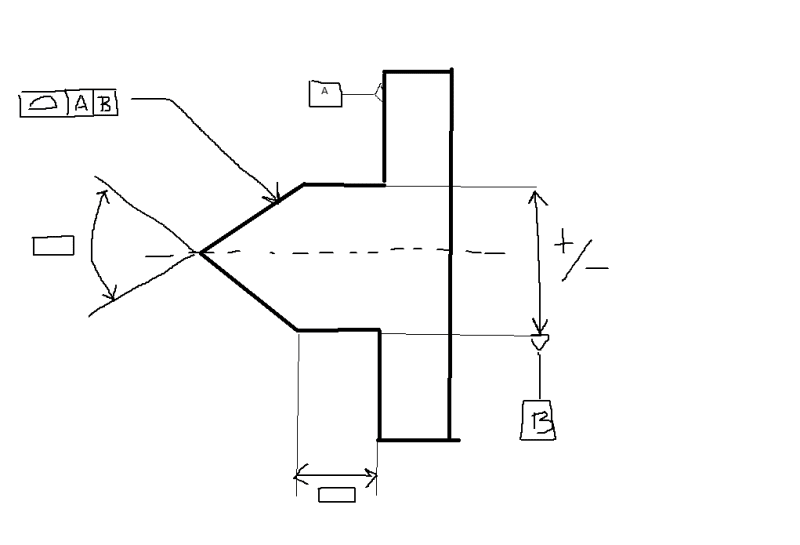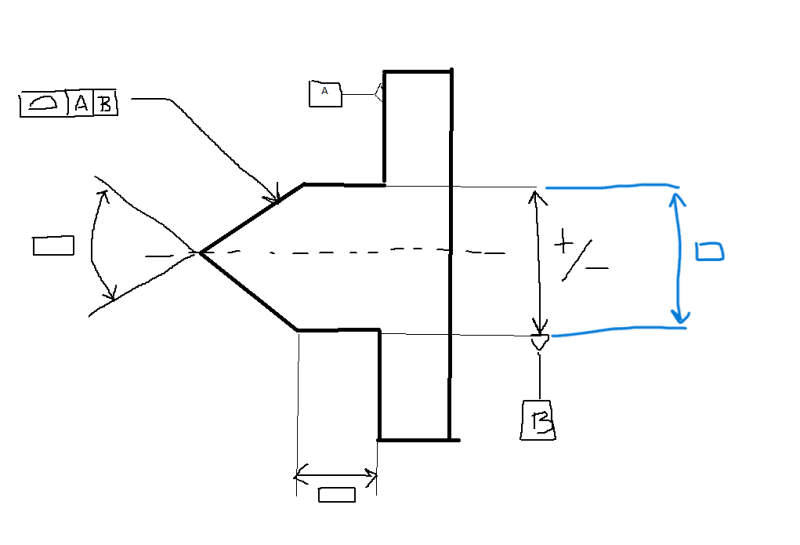rfkflf
Mechanical
- Sep 15, 2022
- 3
Hi All,
Having this debate at work. We use ISO GPS (BS 8888) but happy to hear how it applies to ASME Y14.5, I am sure it's not that different.
Problem:
How to fully define the profile/surface tolerance of a cone? As you can see from the image attached (apologies for using paint), I am trying to define a cone relative to datums A and B (a third datum would be pointless here as it is a revolved feature).
The shaft it sits at the tip of needs to be a linear dimension since it is defined as a shaft fit tol.
Are the two basic dimensions enough to define the cone? I feel like to locate the idealised cone from which to generate the surf. tol. you would require a basic dimension on the shaft as well. Otherwise the angle and offset from datum A can still be respected but the diameter of the cone be miles out. But i already defined the shaft diameter, just not with a basic/TED dim.
Do i need to dimension the shaft twice in my drawing, one TED and one linear? Fig. 8-18 on ASME Y14.5 seems to imply that you do not but its not super clear.
Thank you in advance.

Having this debate at work. We use ISO GPS (BS 8888) but happy to hear how it applies to ASME Y14.5, I am sure it's not that different.
Problem:
How to fully define the profile/surface tolerance of a cone? As you can see from the image attached (apologies for using paint), I am trying to define a cone relative to datums A and B (a third datum would be pointless here as it is a revolved feature).
The shaft it sits at the tip of needs to be a linear dimension since it is defined as a shaft fit tol.
Are the two basic dimensions enough to define the cone? I feel like to locate the idealised cone from which to generate the surf. tol. you would require a basic dimension on the shaft as well. Otherwise the angle and offset from datum A can still be respected but the diameter of the cone be miles out. But i already defined the shaft diameter, just not with a basic/TED dim.
Do i need to dimension the shaft twice in my drawing, one TED and one linear? Fig. 8-18 on ASME Y14.5 seems to imply that you do not but its not super clear.
Thank you in advance.


